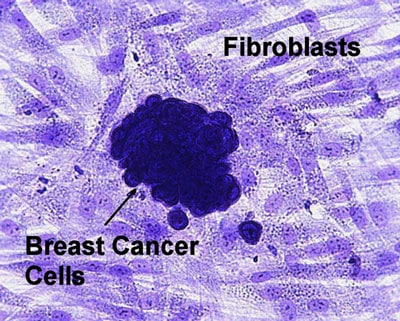Clonogenic assay is otherwise also referred to as a “colony formation,” [1] this pertains to an in vitro process or survival analysis in order to determine a single cell’s capability to form a specific colony [2].

A colony refers to fifty cells or more. This process is particularly useful in analyzing the effects of ionization and cytotoxic agents upon the mortality of cell reproduction in culture mediums. Apparently, only a fraction of seeded cells is capable of forming colonies.[3]
A clonogenic assay, also known as a colony formation assay, is a technique used to study the ability of a single cell to grow into a colony. The assay assesses cells’ proliferative capacity and capability to retain this capacity after being subjected to external factors such as radiation or drugs. It’s fundamental in cell biology, oncology, and radiation biology.
When performing a clonogenic assay with suspension cells, there are specific challenges and considerations to keep in mind:
Clonogenic Assay with Suspension Cells:
- Substrate Attachment: Suspension cells, by definition, do not naturally adhere to a substrate like adherent cells. Therefore, when performing a clonogenic assay with suspension cells, one must use a semi-solid medium, such as methylcellulose or agar, to prevent the cells from floating. This medium supports the growth of colonies in a three-dimensional space, allowing them to be quantified.
- Seeding Density: It’s crucial to optimize the seeding density. More cells and you may need more colonies for analysis. Too many cells and the colonies may merge, making them difficult to count.
- Incubation: After seeding in a semi-solid medium, the cells are incubated for a specific duration, allowing colonies to form. The incubation time can vary based on the cell type and growth rate but typically ranges from 1 to 3 weeks.
- Colony Identification and Counting: After the incubation period, the colonies are identified, often stained for better visualization, and then counted. A colony is typically defined as a cluster of 50 or more cells. The number and size of colonies provide information about the cell’s clonogenic potential.
Applications of Clonogenic Assay for Suspension Cells:
- Radiation and Drug Sensitivity: This assay can determine the sensitivity of suspension cells (often hematopoietic cells or leukemia cells) to radiation or chemotherapeutic agents.
- Stem Cell Research: Clonogenic assays are essential in hematopoietic stem cell research to assess the ability of a single stem cell to give rise to a colony of differentiated cells.
- Oncology: In cancer research, especially with leukemia or lymphoma cell lines, clonogenic assays help assess the tumorigenic potential of cells and their response to treatments.
Future Challenges:
- Colony Overlap: In a semi-solid medium, colonies may grow close to each other or overlap, making counting challenging.
- Inconsistency: Achieving a consistent semi-solid medium consistency can be tricky, which can affect the reproducibility of the assay.
- Cell Retrieval: Retrieving cells from a semi-solid medium for further analysis can be more challenging than from a liquid cell medium.
In summary, while clonogenic assays are traditionally associated with adherent cells, they can be adapted for suspension cells using semi-solid media. This adaptation allows researchers to assess the clonogenic potential of hematopoietic cells, leukemia cells, and other suspension cell types, providing valuable insights into their biology and treatment response.
Published Clinical Citations
[1] ^ Fedr, Radek, Zuzana Pernicová, Eva Slabáková, Nicol Straková, Jan Bouchal, Michal Grepl, Alois Kozubík, and Karel Souček. 2013. Automatic cell cloning assay for determining the clonogenic capacity of cancer and cancer stem-like cells. Cytometry. Part A : the journal of the International Society for Analytical Cytology, no. 5 (February 28). doi:10.1002/cyto.a.22273. https://www.ncbi.nlm.nih.gov/pubmed/23450810
[2] ^ Hauser, Ross A, and Amos Orlofsky. 2013. Regenerative injection therapy with whole bone marrow aspirate for degenerative joint disease: a case series. Clinical medicine insights. Arthritis and musculoskeletal disorders (September 4). doi:10.4137/CMAMD.S10951. https://www.ncbi.nlm.nih.gov/pubmed/24046512
[3] ^ Nahas, Shareef A, Robert Davies, Francesca Fike, Kotoka Nakamura, Liutao Du, Refik Kayali, Nathan T Martin, Patrick Concannon, and Richard A Gatti. 2011. Comprehensive profiling of radiosensitive human cell lines with DNA damage response assays identifies the neutral comet assay as a potential surrogate for clonogenic survival. Radiation research, no. 2 (September 30). https://www.ncbi.nlm.nih.gov/pubmed/21962002

